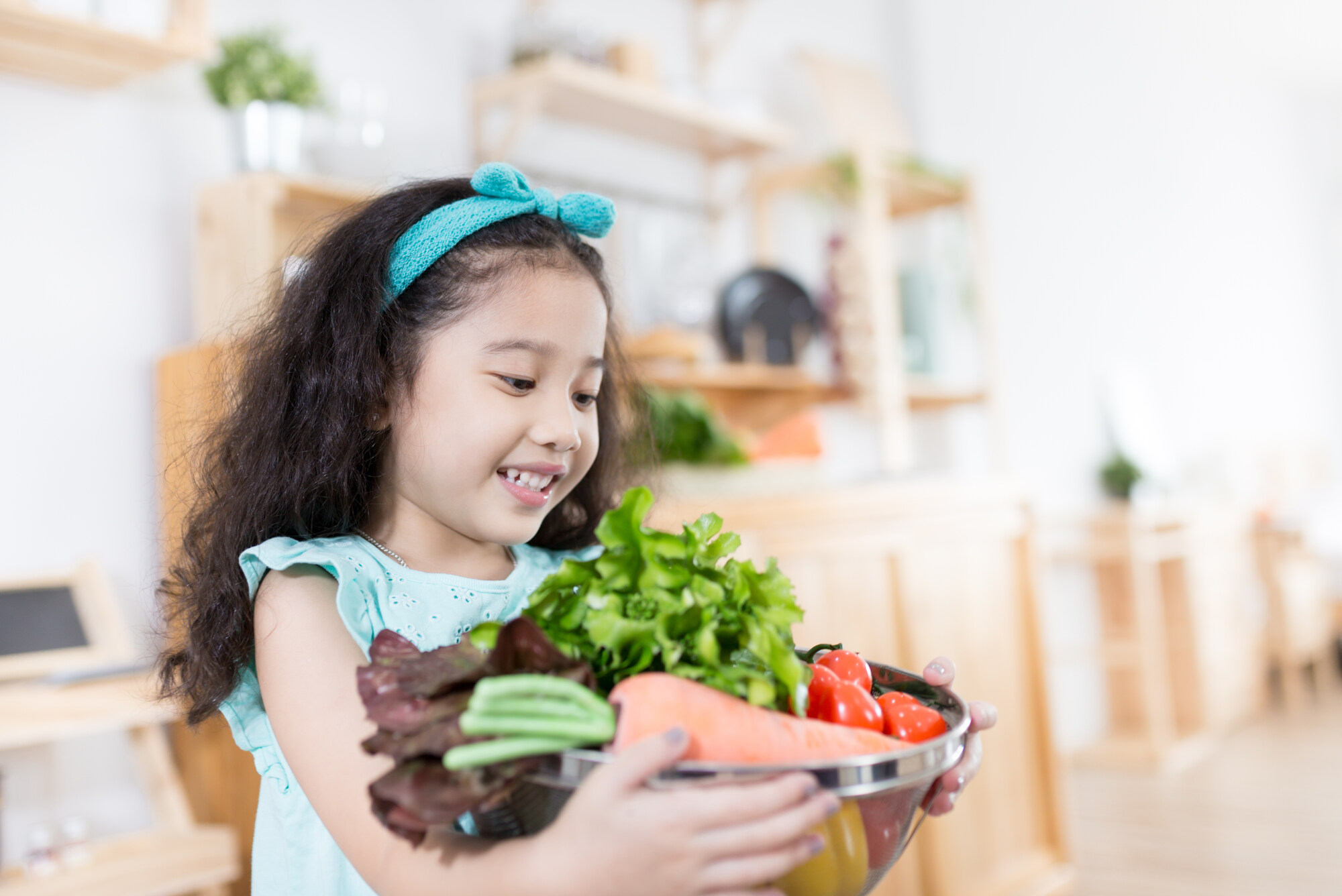General Wellness & Healthy Lifestyle
Raising a Healthy Eater: 3 Ways to Make Mealtime a Happy Time

Mealtimes with your kiddos can be a wonderful opportunity for connection and growth. But let’s face it, it can also be stressful. Worrying about what they are eating, how much (or how little) they are eating, and trying to ensure everyone has food they like, can add a lot of stress to the dinner table. The good news is it doesn’t have to be that way! Fostering a sense of adventure and curiosity with food can transform mealtimes into enjoyable experiences for the whole family. Keep reading to learn how to help your child make healthier food choices so you can create a stress-free, joyful atmosphere at the family table.
Raising a Happy Healthy Eater
The best way to raise a healthy happy eater is to remove stress and pressure around food. Stress isn’t good for anyone, especially not your family when eating. Keeping family mealtimes positive helps create a happy experience for your entire family.
Here are tried and tested techniques that can help make your mealtimes fun and stress-free:
1. Embrace the journey of healthy eating
Healthy eating habits develop over time, and each meal is a chance for your kiddo to explore new foods. What your kid does or doesn’t eat at one meal won’t decide their lifetime food intake. So there’s no need to stress about what your child eats at any one given meal. Kids often need multiple exposures—sometimes up to 15 times!—before they feel comfortable with new foods. By allowing them to explore foods without pressure, you create a positive environment that encourages lifelong healthy eating habits.
Offer a variety of healthy foods and let your child see you enjoying them. Include plenty of fruits, vegetables, whole grains, and beans in your meals. Serving these foods regularly makes them familiar and appealing. Children learn by watching the important adults in their lives, so modeling healthy eating is key.
Consistently having mealtimes and snack times around the same time every day helps children feel secure. Knowing when to expect food can prevent overeating and help them trust that food will always be available.
2. Encourage exploration without pressure
Creating a relaxed atmosphere around food can make it easier for kids to eat well. Let your child decide when to try foods at their own pace. Here are some tips on how to explain healthy eating to your child:
For younger kids, let them explore the tastes, textures, and smells of foods. There’s a lot of sensory experiences involved in eating and enjoying food, and letting kids try a wide variety of different types of foods helps them figure out what they like. Crunchy, soft, chewy, sticky, sweet, sour—there are lots of different types to explore!
For older kids, fostering independence and autonomy in their food choices is important. Offer choices, such as whether to have brown rice or quinoa with dinner, so they feel involved in the decision-making process. You can also let them customize their meals with dressings, sauces, or toppings to make foods more appealing. As kids get older, it can also be a good time to start teaching them basics of nutrition and how the nutrients in food nourish their bodies. For example, you can explain that milk has calcium which supports strong bones.* It’s important to keep nutrition education positive. Avoid discussing calories or labeling some foods as ‘bad,’ as this can make those foods seem more appealing or create unhealthy ideas about food.
At all ages, teaching children to listen to their hunger and fullness cues is crucial. Known as intuitive eating, this approach helps your kid recognize their own body cues of hunger and fullness. It’s an opportunity to teach them to eat when they are hungry and to stop eating when they are full. Avoid requiring your kiddo to ‘clean their plate’, as this can override their natural fullness cues.
3. Focus on enjoyable conversations at mealtimes
One great way to create a positive mealtime experience is to focus on non-food topics. It can be easy to slip into pressuring kids to eat specific foods if you focus on the food. Instead, engaging in enjoyable conversations can make meals more pleasant and stress-free.
For younger kids, you can talk about recent activities, their day, and friends or family members. These discussions help them learn about their world and feel more connected.
For older kids, ask their opinions about recent events, ideas for future activities, or about their school day. These conversations can deepen your connection and make mealtimes more enjoyable.
Family discussion games can also be a fun way to connect:
- Two truths and a lie: Each person shares three statements about their day—two true and one false. The others guess which statement is the lie.
- Rose, thorn and bud: Share a favorite moment from the day or recent activity (the rose), something that you did not like from the day (the thorn), and something you are looking forward to (the bud).
- Question of the day: Everyone answers a fun or interesting question, such as “What is something new you learned today?”, “If you could have any superpower, what would it be and why?”, “What is something you did today that made you proud?” or “What is something you are thankful for today?”
Why is exposure to healthy eating important in childhood?
The foods children are regularly exposed to during their early years can help shape their lifelong eating habits. From flavors to foods, familiarity with a variety of healthy foods can lead to a more varied diet as an adult. By making healthy foods part of your child’s diet now, you help set the foundation for their future.
If you have ongoing concerns about your child’s eating habits and development, please talk with their healthcare professional.
L’il Critter Multivitamins for the win!
Support your kiddo’s nutrient intake with L’il Critters Gummy Vites. These delicious gummy vitamins provide essential nutrients like vitamins A, B12, B6, C, D and E to support health and development.* In fun fruity flavors like cherry, strawberry, orange, pineapple, and blueberry, these gummies make taking vitamins an enjoyable part of your child’s day.
Healthy eating for kids: long term success
Raising a healthy, happy eater is a journey that takes time and patience. By creating a stress-free and pressure-free environment during meals, you can set the stage for lifelong healthy eating habits. L’il Critters gummy supplements are here to help support your child in their nutrition journey. Remember, every small step you take towards fostering a positive eating experience contributes to your child's overall well-being and happiness, creating a foundation that will last a lifetime.
Brought to you by the L’il Critters™ nutrition experts.



